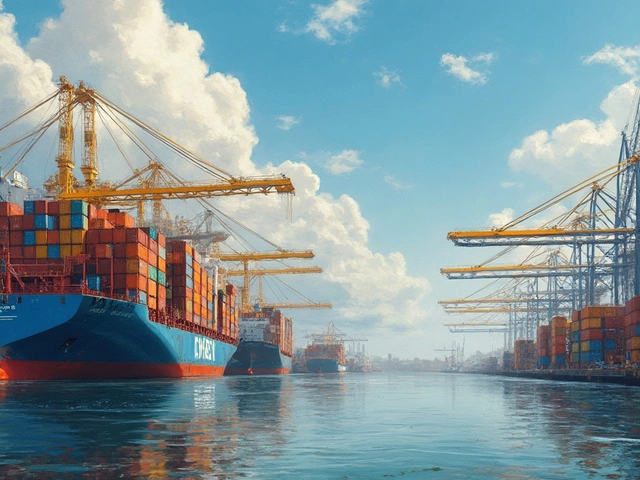E‑Logistics Issues: What Goes Wrong and How to Fix It
Running an online business means your packages are constantly on the move. When something stalls – a confused software dashboard, a missed delivery window, or an unexpected fee – it hits your bottom line fast. Below you’ll find the everyday hurdles most e‑logistics teams face and realistic ways to nip them in the bud.
Common Pain Points in E‑Logistics
First up, the tech side. Many companies pile on multiple tools – a warehouse management system (WMS), a transport management system (TMS), and an ERP – without checking if they actually talk to each other. The result? Duplicate orders, inventory gaps, and a lot of wasted time. Before you buy, list the exact tasks you need – real‑time stock, route optimisation, demand forecasting – and match those to a system that can do all three without a pricey integration.
Last‑mile delivery is another hot spot. It’s the final stretch from a local hub to the customer’s door, and it’s often the most unpredictable part of the journey. Traffic jams, missed cut‑off times, and unclear address data cause the most complaints. Using a simple address‑validation tool and sharing live tracking links with buyers cuts the confusion dramatically.
Shipping costs also love to surprise you. A 5 lb parcel that looks cheap on a calculator can jump in price once you add fuel surcharges, residential fees, or weekend handling. Keep a small spreadsheet of the top three carriers you use – UPS, FedEx, and a local courier – and update it monthly with their published rates. You’ll spot patterns and avoid overpaying for a single shipment.
Amazon’s own logistics network adds another layer. Many sellers assume Amazon will handle everything, but the platform still expects you to meet strict inventory prep rules and fast‑ship standards. Missing a prep requirement can land your stock in a quarantine zone, delaying sales by days.
Practical Steps to Fix or Avoid Issues
Start with a quick software audit. Write down every function you need – order capture, pick‑list generation, carrier label printing – then rate each current tool on a 1‑5 scale for each function. If a tool scores below three on anything essential, it’s time to look for a replacement that covers the gap out‑of‑the‑box.
Next, tighten your cut‑off routine. Most couriers stop accepting overnight parcels at a specific hour (often 5 pm). Set an internal alarm 30 minutes before that time and make it part of your daily checklist. When the alarm rings, any orders that haven’t cleared the system get flagged for next‑day processing instead of a missed deadline.
For last‑mile hiccups, give drivers a clear set of delivery instructions: exact door code, safe‑drop location, or preferred time window. Pair that with a simple SMS update to the customer when the driver is en‑route. Those two actions alone cut missed‑delivery calls by roughly 40%.
When comparing carriers, look beyond the headline price. Factor in handling fees, insurance costs, and average delivery speed for the zones you serve. If a carrier is slightly cheaper but consistently slower, you may lose customers who expect next‑day service.
Finally, treat packaging as part of the logistics plan, not an afterthought. Measure the dimensions of your most‑shipped items, then choose a carrier whose size limits match. For oversized parcels, UPS pallet shipping can be cheaper than a standard parcel service, but only if you consolidate items properly.
Even with all these steps, issues will pop up now and then. That’s why it helps to have a logistics partner who can step in quickly. At Dex Removals & Logistics Services we specialize in smoothing out the rough spots – from software advice to last‑mile coordination – so you can focus on selling, not on shipping headaches.
Got a specific e‑logistics snag you’re wrestling with? Drop us a line and we’ll walk through a fix together.
November 28, 2024
Evelyn Wescott
0 Comments
E-commerce logistics faces several challenges, from supply chain disruptions to the complexities of last-mile delivery. As online shopping continues to grow, so too do the expectations for fast and reliable delivery services. Managing returns efficiently and adapting to rapidly changing technology are crucial for businesses looking to remain competitive. Examining these issues can help companies create more robust logistical strategies.




